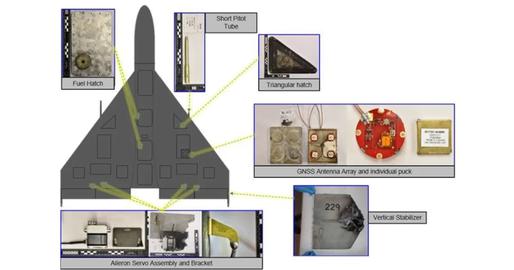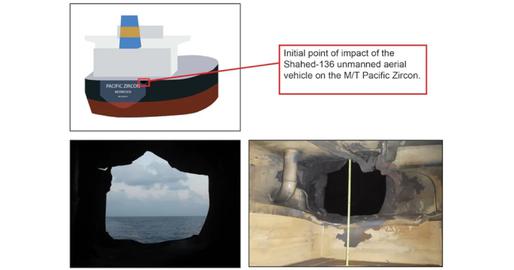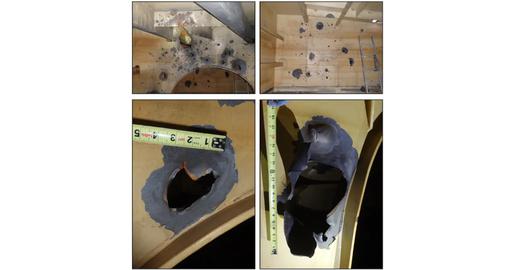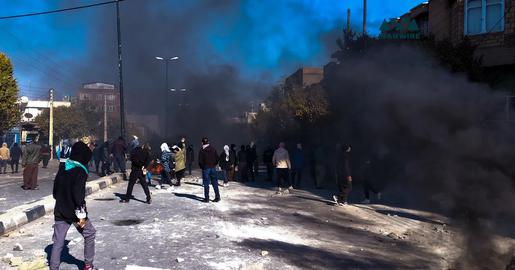The U.S. Navy announced on November 22 that investigators have concluded that an Iranian drone was used to target an oil tanker in international waters off the coast of Oman last week. The November 15 attack caused damage to the vessel linked to an Israeli billionaire, but there were no casualties.
In a statement released days earlier, General Michael “Erik” Kurilla, commander of U.S. Central Command, said the attack against a civilian vessel in this critical maritime strait demonstrates, once again, the destabilizing nature of Iranian malign activity in the region.”
How did this attack unfold and what are the possible consequences for the Islamic Republic?
Who is the owner of the tanker?
Pacific Zircon, the oil tanker that was targeted in the attack, is operated by Singapore-based Eastern Pacific Shipping, a company ultimately owned by Israeli billionaire Idan Ofer.
After the Persian Gulf states of Bahrain and United Arab Emirates normalized relations with Israel in 2020 and 2021, Iran announced it would not “tolerate” the presence of Israeli ships in the Gulf. However, the Pacific Zircon was sailing under the Liberian flag.
How did the U.S. get its hand on the drone’s debris?
The day after the attack, the U.S. Navy sent explosives experts aboard the tanker to assess the damage and to collect debris and bomb residue for analysis.
The evidence was taken to a lab at the headquarters of the U.S. 5th Fleet in Bahrain, “where technicians confirmed Iran’s connection to the attack,” the U.S. Navy said.
“The aerial drone that hit the commercial tanker was identified as a Shahed-136 UAV [unmanned aerial vehicle], fitting a historical pattern of Iran’s increasing use of a lethal capability directly or through its proxies across the Middle East.”
Russia has been using the Shahed-136 suicide drone, which is manufactured only in Iran, to conduct strikes against critical civilian infrastructure across Ukraine.
According to the U.S. administration, Iran has also provided Yemen’s Shia Houthi rebels with drones that were used earlier this year in attacks on Saudi Arabia and the U.A.E.
The 5th Fleet is responsible for U.S. naval forces in the Persian Gulf, Red Sea, Arabian Sea, and parts of the Indian Ocean. It is tasked with protecting international commercial shipping through the strategic Strait of Hormuz, located between the Persian Gulf and the Gulf of Oman.
The area has been increasingly threatened by the Islamic Republic in recent years. In July 2021, a suspected drone attack off Oman hit a petroleum product tanker managed by an Israeli firm. Iran has denied any involvement.
How did the attack happen?
According to the U.S. Navy, a Shahed 136 explosive-tipped drone flew into the aft section of the ship around 5:30 p.m. on November 15, punching a 30-inch-wide (76-centimeter) hole through on the outer hull on the starboard side of the ship’s stern, just below the main deck, “while subsequently penetrating and damaging internal compartments.” The explosive impact “also damaged a shipboard boiler, potable water tank and life raft.”
The U.S. believes the drone was launched from a base of Iran’s Islamic Revolutionary Guards Corps (IRGC) in the port of Chah Bahar in the Iranian province of Sistan and Baluchestan.
A U.K. Royal Navy frigate, the HMS Lancaster, offered assistance to the crew of the Pacific Zircon after being made aware of the incident, the British Defense Ministry said, while the U.S. 5th Fleet directed guided-missile destroyer USS The Sullivans, patrol coastal ship USS Chinook and a P-8 Poseidon maritime patrol aircraft to assist and assess the situation.
What are the possible legal consequences of the attack
The attack on a commercial ship in international waters lacks any legal justification and puts the Islamic Republic and the IRGC in a difficult position.
This is not the first time a commercial vessel has been targeted by an Iranian-made drone. More than a year ago, on July 29, the Liberian-flagged oil tanker MT Mercer Street was travelling from Tanzania to the U.A.E. when it was hit off the coast of Oman. The attack claimed the lives of two people, a British and a Romanian national. At the time, the British government announced that the ship had been attacked by Shahed-136 drones.
Iranian-made kamikaze drones have raised increasing international concern over the past months since Russia allegedly deployed hundreds of them for its war in Ukraine.
Russia is accused of systematically targeting Ukraine's energy infrastructure, causing severe damage to the country's power facilities, which Ukrainian President Volodymyr Zelensky has called "an obvious crime against humanity."
The Islamic Republic has admitted it had provided drones to Russia, insisting that they were sent months before the Ukrainian war.
Kyiv and its Western backers claim the transfer of the drones to Russia violates UN Security Council Resolution 2231 endorsing the 2015 nuclear deal between Iran and world powers.
Ukraine invited UN specialists to examine drones it said were made in Iran.
If confirmed that Iranian drones were used against Ukrainian targets, it would mean that, first, the Islamic Republic is involved in the Russian aggression against Ukraine and, second, that the Iranian illegal use of its drones has become a new factor of international instability.
It is very unlikely that Russia, which hold veto power at the Security Council, would support a resolution against the Islamic Republic over the supply of drones.
However, it is increasingly likely that a bill introduced in the U.S. Congress to hinder Iran’s ability to manufacture and proliferate drones will be approved.
The Stop Iranian Drones Act would require sanctions on anyone involved in the “supply, sale, or transfer” of Iranian drones. The U.S. has previously sanctioned those with ties to Iran’s drone program, but this legislation would enable the government to strengthen and broaden the list of designated entities.
Analysis of the debris of the drone used to target the Pacific Zircon shows that various parts had been made by U.S. companies. Now, the U.S. must find ways to prevent Iran from bypassing sanctions to acquire such parts.
Earlier this month, the U.S. Treasury sanctioned entities and individuals it said were involved in the transfer of Iranian drones to Russia.
The European Union agreed on similar measures, with the Czech presidency of the bloc saying: "EU states decided to freeze the assets of three individuals and one entity responsible for drone deliveries [and are] also prepared to extend sanctions to four more Iranian entities that already featured in a previous sanctions list."
It is possible that, after the attack on the Pacific Zircon, the EU will finally include the IRGC on its list of terrorist organizations.
visit the accountability section
In this section of Iran Wire, you can contact the officials and launch your campaign for various problems





























comments